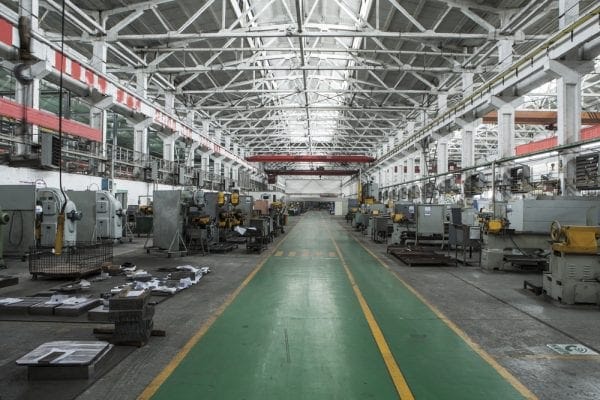Relocating manufacturing operations is no small feat—how do you ensure the seamless transition of the very machinery that drives your production? Moving heavy machinery is more than just logistics; it’s about safeguarding the backbone of your manufacturing process. Can you afford to risk damage, delays, or safety hazards when relocating such critical equipment?
Whether you’re navigating a short-distance move within your facility or tackling the complexities of inter-state transportation, the stakes are enormous. Does your plan include the precision, expertise, and resources required to execute the move flawlessly?
In this blog, we delve into actionable strategies for smooth industrial equipment moving and reveal how professional heavy equipment transportation services can turn this monumental challenge into a manageable process. Ready to find out how to make it work? Let’s get started.
Understanding the Complexity of Moving Heavy Machinery
The process of moving heavy machinery is far from a simple logistics task. Unlike household goods or office furniture, industrial machinery often weighs several tons, features delicate components, and requires specialized knowledge for disassembly and reassembly.
Some challenges include:
- Weight and Size: Machines like CNC tools, industrial presses, or injection molding machines are massive and often require cranes, forklifts, or custom transport vehicles.
- Precision Requirements: Misalignment or mishandling during relocation can cause permanent damage or operational issues.
- Safety Risks: Moving machinery involves risks to workers and equipment if proper protocols aren’t followed.
Tips for Safely Moving Heavy Machinery
Develop a Comprehensive Plan
Before starting the move, create a detailed plan that outlines every aspect of the process. Consider the following:
- Inventory the machinery: List all equipment to be moved, including dimensions, weight, and special requirements.
- Timeline: Establish realistic deadlines for disassembly, transportation, and reinstallation.
- Safety precautions: Identify potential risks and outline measures to mitigate them.
Professional companies specializing in industrial equipment moving can provide expert advice during this stage, ensuring nothing is overlooked.
Assemble the Right Team
Relocating heavy machinery is a team effort. Assemble a group of skilled personnel, including:
- Engineers familiar with the machinery’s technical specifications.
- Certified riggers for disassembly and handling.
- Logistics experts to coordinate transportation routes and schedules.
Incorporating professional heavy equipment transportation services adds an extra layer of expertise, reducing risks and ensuring compliance with industry standards.
Disassemble with Precision
Many types of heavy machinery require partial or full disassembly before being moved. During this phase:
- Label every component meticulously to simplify reassembly.
- Use specialized tools to avoid damaging sensitive parts.
- Keep track of fasteners, wiring, and other small components.
Detailed documentation ensures the machinery can be efficiently reassembled at its destination.
Choose the Right Equipment
Specialized tools and vehicles are essential for moving heavy machinery safely. Depending on your needs, this may include:
- Cranes and hoists for lifting heavy components.
- Forklifts for smaller but bulky items.
- Flatbed trailers or lowboys for transporting the machinery.
Professional industrial equipment moving providers have access to this equipment, ensuring the relocation is carried out seamlessly.
Conduct a Site Assessment
Before transporting your machinery, inspect the destination site to address any potential challenges.
- Verify that entryways, pathways, and installation areas can accommodate the equipment.
- Identify power source requirements and ensure utilities are ready for reinstallation.
- Plan the placement of machinery to optimize workflow.
A thorough site assessment helps avoid delays and ensures the machinery is operational as soon as possible.
Prioritize Safety
Safety is paramount during moving heavy machinery. Adhere to the following guidelines:
- Ensure all personnel wear appropriate personal protective equipment (PPE).
- Use rigging and lifting equipment certified for the load’s weight.
- Conduct safety briefings to keep the team informed about risks and protocols.
Working with professional heavy equipment transportation services ensures compliance with safety regulations and minimizes accidents.
Secure Reliable Transportation
Transporting heavy machinery requires specialized vehicles and careful coordination. Here’s what to consider:
- Secure the equipment using appropriate straps and fixtures to prevent shifting during transit.
- Choose transportation routes with minimal obstacles like low bridges or weight-restricted roads.
- Obtain any necessary permits for oversized loads.
Partnering with industrial equipment moving professionals ensures every detail is handled, from route planning to securing the machinery during transport.
Benefits of Hiring Heavy Equipment Transportation Services
Relocating industrial machinery is a specialized task best left to professionals. Here’s how heavy equipment transportation services add value to your move:
Specialized Equipment and Expertise
Professional movers come equipped with cranes, flatbed trucks, and other tools designed for moving heavy machinery. Their expertise minimizes risks, saves time, and ensures the job is done right the first time.
Compliance with Regulations
Large machinery transport often involves navigating complex regulations, especially for interstate moves. Professionals understand the necessary permits, road restrictions, and safety standards, ensuring a hassle-free process.
Cost Efficiency
While hiring a professional service comes at a cost, it often proves more economical in the long run. By avoiding damage, reducing downtime, and ensuring proper handling, you save on repair and replacement expenses.
Common Mistakes to Avoid When Moving Heavy Machinery
Even with meticulous planning, certain mistakes can derail your machinery relocation project. Watch out for these pitfalls:
- Underestimating the Complexity: Thinking you can handle the process without expert help can lead to costly errors.
- Skipping Safety Protocols: Failing to prioritize safety can cause accidents and damage to equipment.
- Improper Packaging: Not securing machinery parts properly can result in damage during transit.
- Neglecting Insurance: Always ensure your machinery is insured for transit to cover any unexpected damages.
Conclusion:
Relocating industrial equipment is a daunting but manageable task with the right approach. By planning meticulously, prioritizing safety, and leveraging professional heavy equipment transportation services, you can streamline the process and minimize risks. From disassembly to transportation and reinstallation, every step must be executed with care to avoid costly mistakes. Partnering with professional heavy equipment transportation services and industrial equipment moving specialists can make all the difference, ensuring your machinery reaches its destination safely and on time.. Whether it’s a factory expansion, relocation, or equipment upgrade, professional services ensure your industrial equipment moving needs are met with precision and care.
At Writers Relocations, we specialize in providing seamless solutions for moving heavy machinery. With years of experience and a dedicated team, we ensure your relocation is efficient, safe, and hassle-free. Let us handle the complexities of your move so you can focus on what matters most—your business operations. Contact Writers Relocations today to get started!

